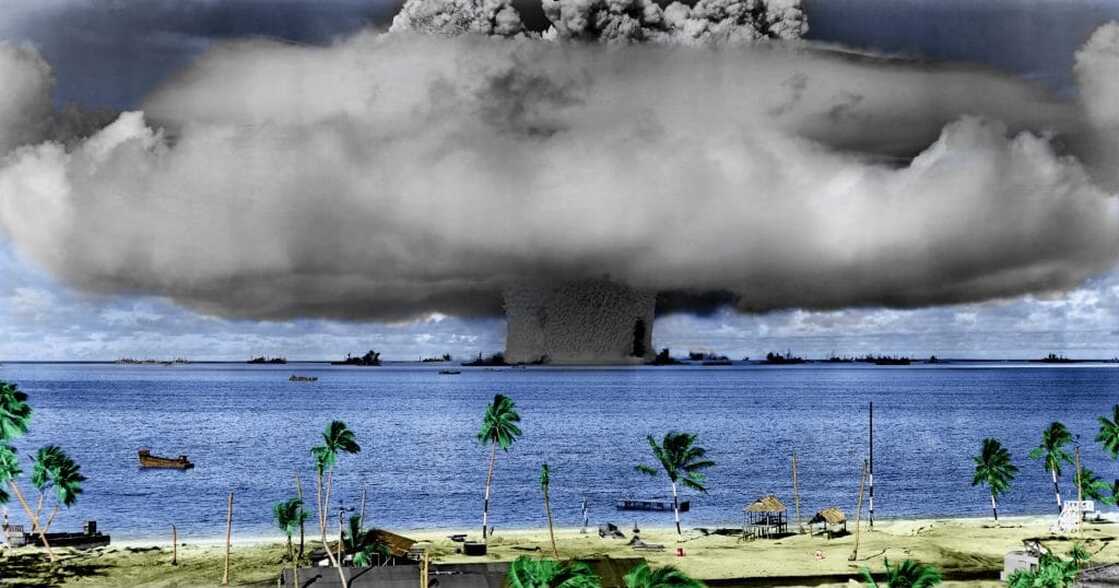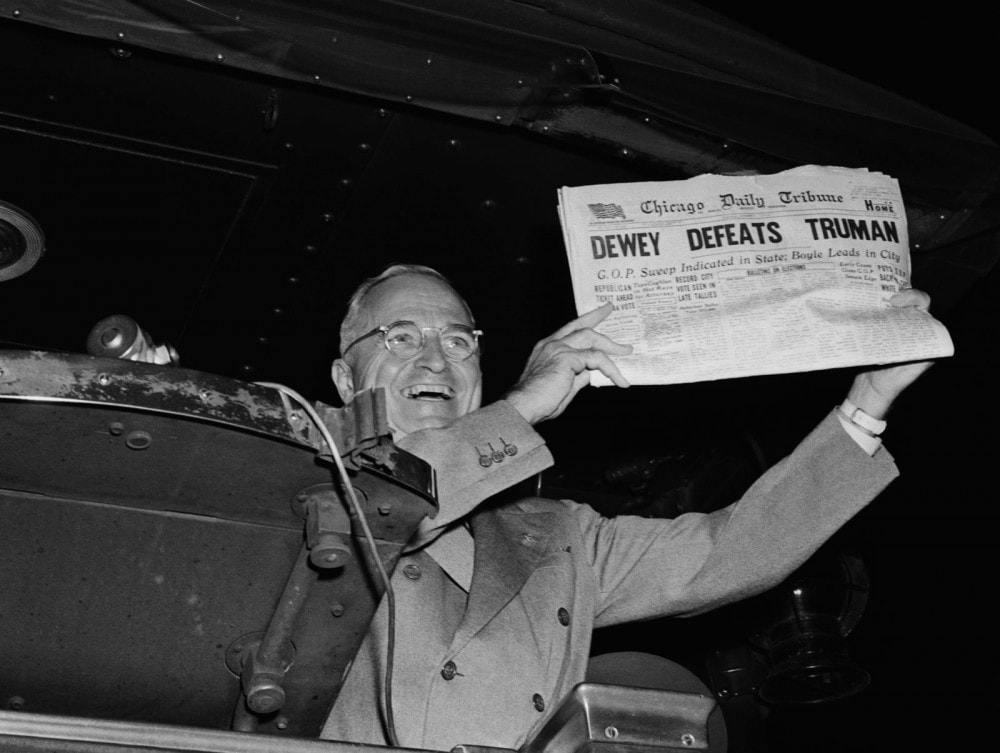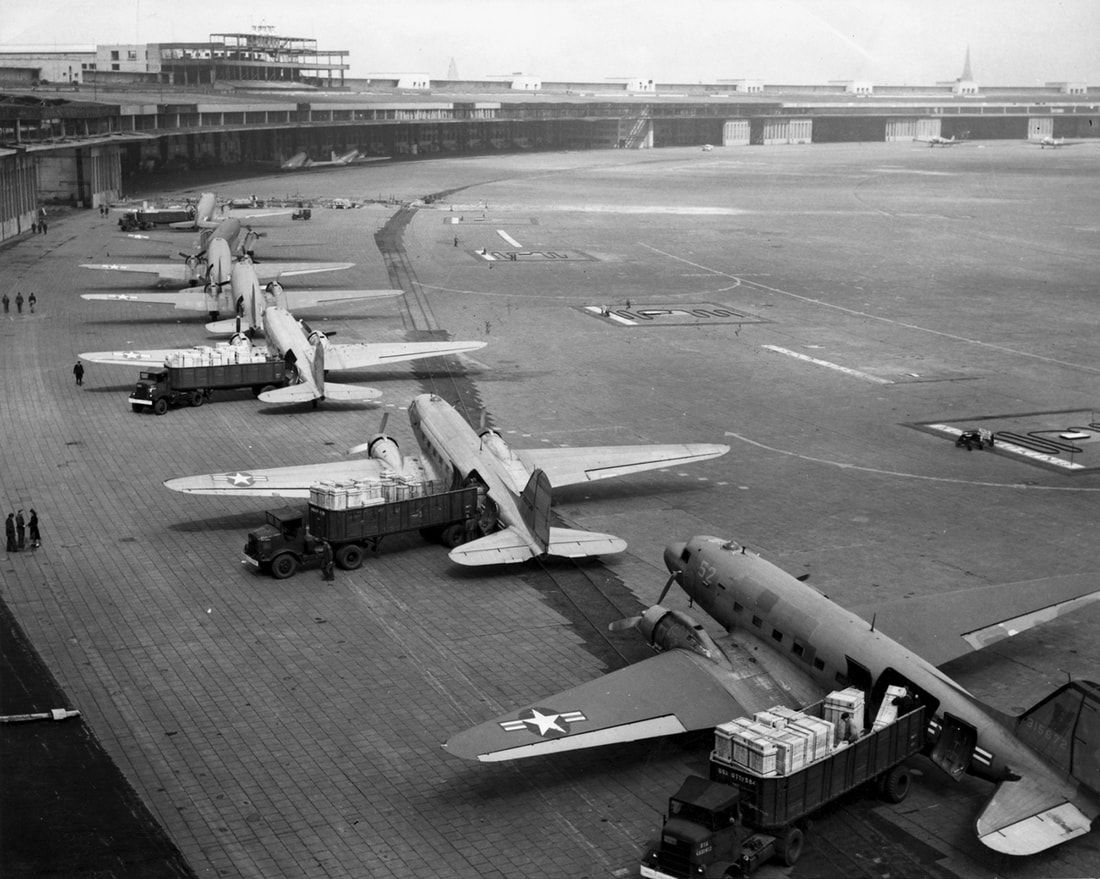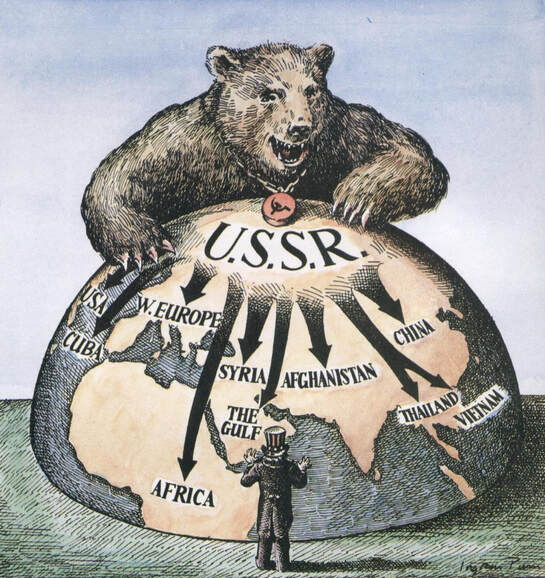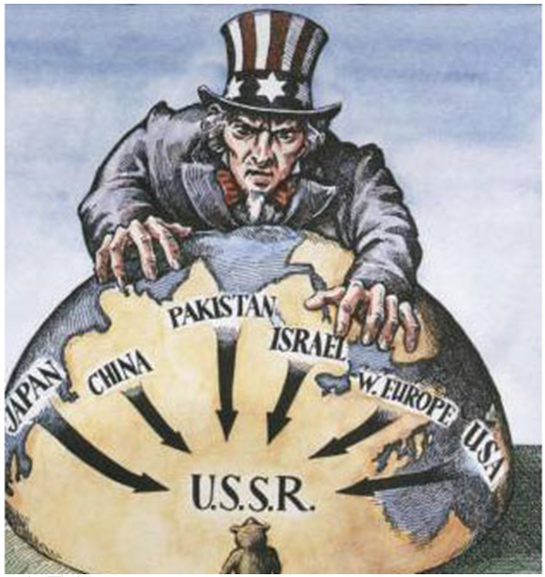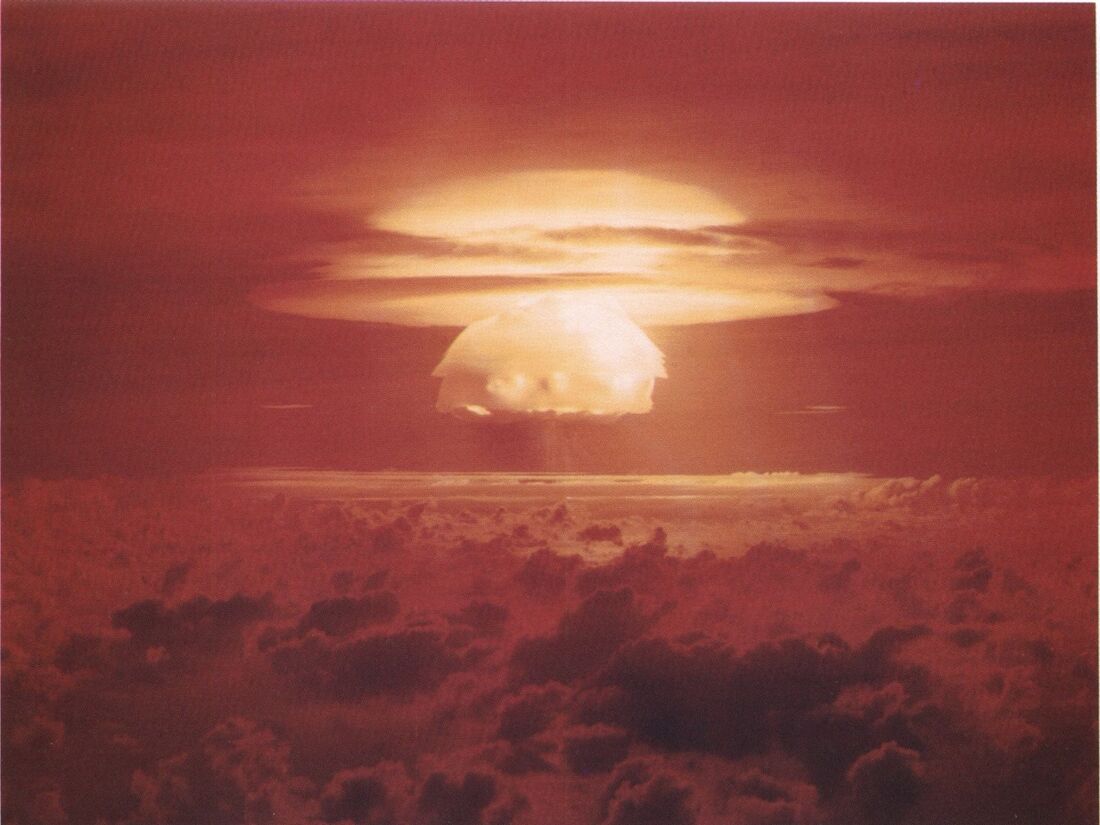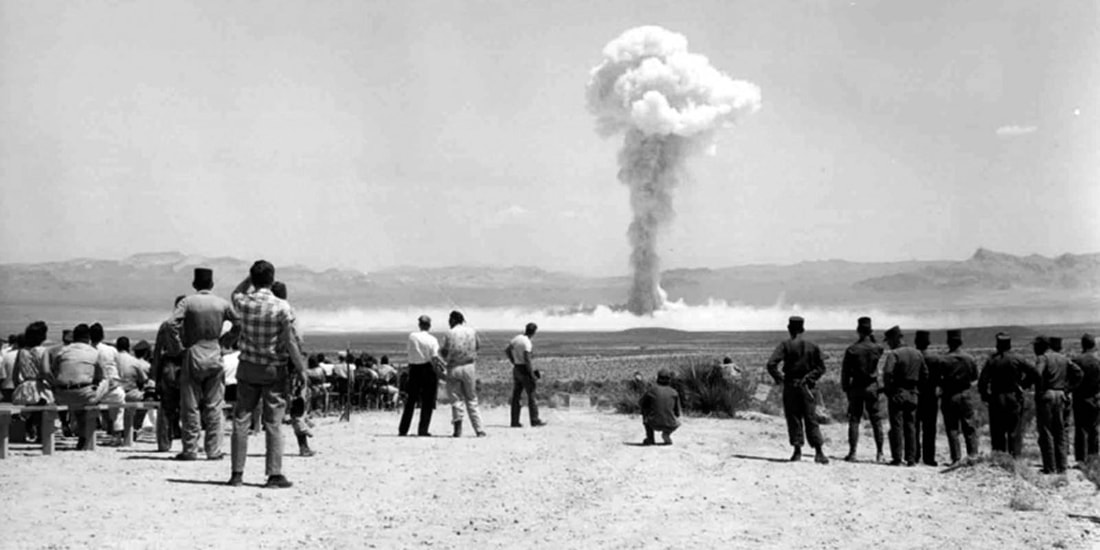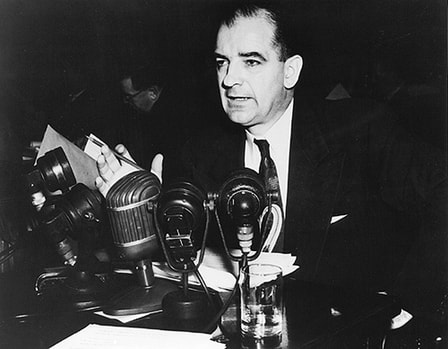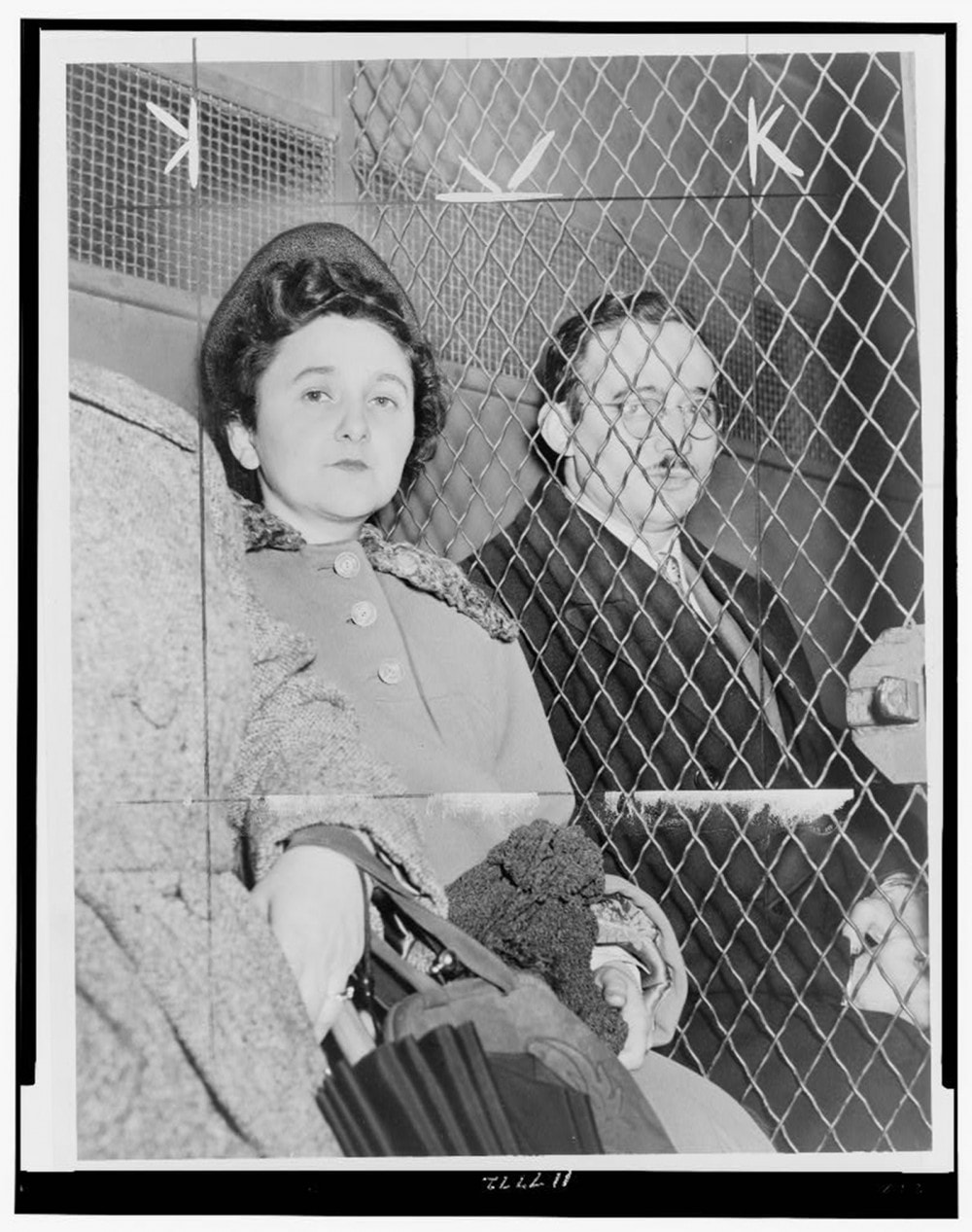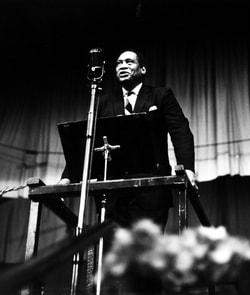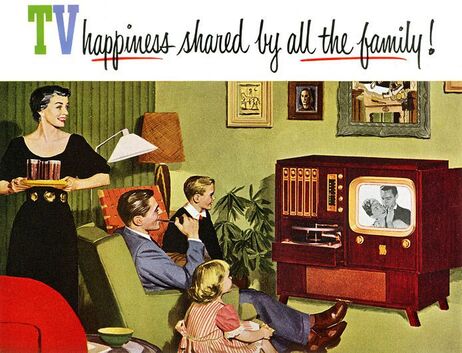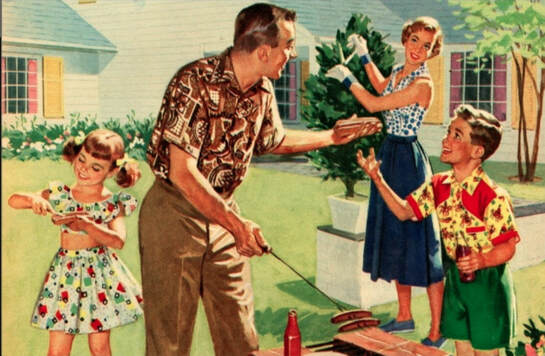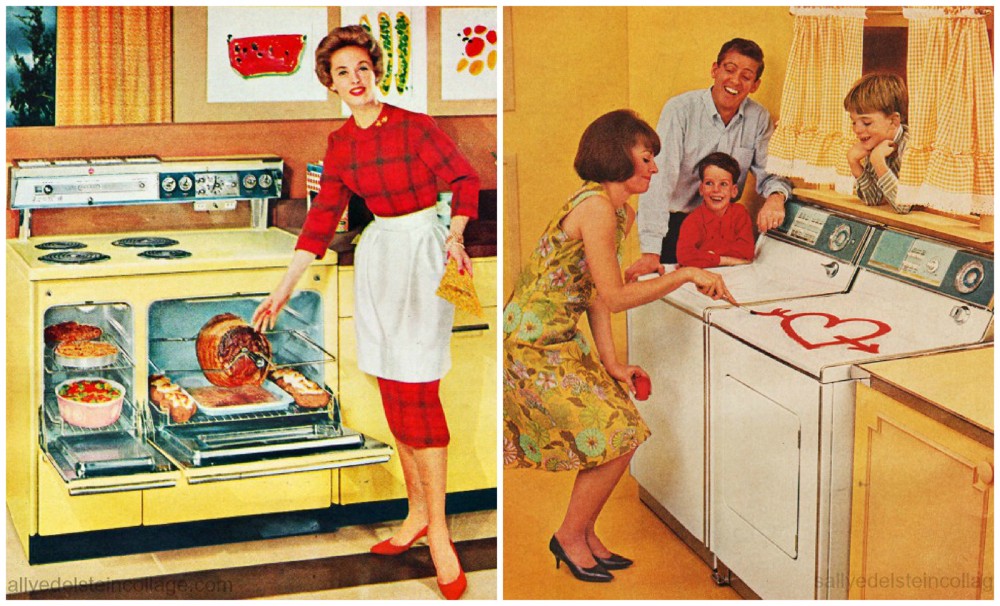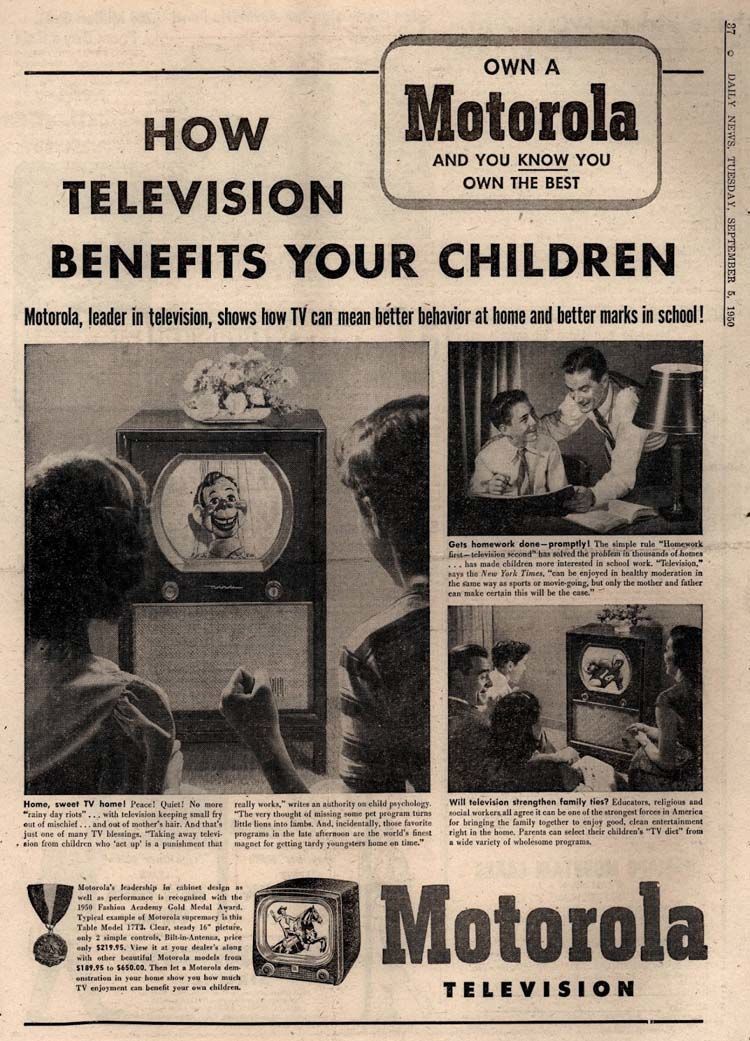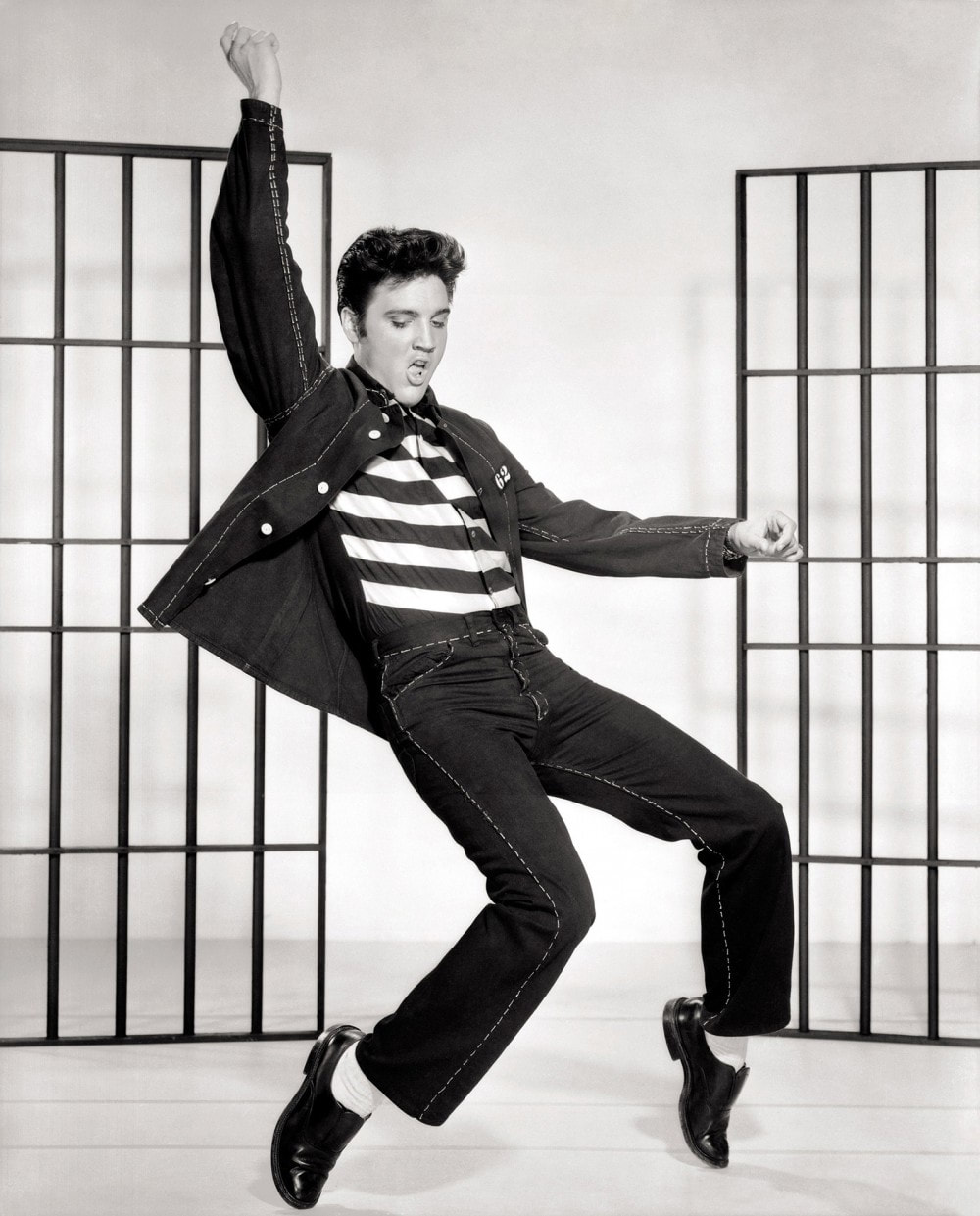The Early Cold War
1940s-1960s
Contents
The Early Cold War, 1940s-1960s:
The Truman Doctrine
|
Against all expectations, Harry Truman won reelection in the 1948 presidential election. Here he holds up a copy of a Chicago Tribune newspaper incorrectly declaring his opponent, Thomas Dewey, the winner.
|
The Berlin Blockade and resultant Allied airlift was one of the first major crises of the Cold War. Here a U.S. Navy Douglas R4D and U.S. Air Force C-47 aircraft unload at Tempelhof Airport in 1948 or 1949.
|
Review:
- How did US leaders respond to the threat of Soviet expansion in Europe?
- How did President Truman use the power of the presidency to limit the spread of communism in East Asia?
Brinkmanship
|
Detonated on March 1, 1954, Castle Bravo was the most powerful nuclear device ever tested by the U.S. But the effects were more gruesome than expected, causing nuclear fall-out and radiation poisoning in nearby Pacific islands.
|
Test of the tactical nuclear weapon “Small Boy” at the Nevada Test Site, July 14, 1962.
|
|
Brinkmanship Quizlet
|
Review:
- What methods did the United States use in its global struggle against the USSR?
Duck and Cover
|
Joseph McCarthy, Republican Senator from Wisconsin, fueled fears during the early 1950s that communism was rampant and growing. This intensified Cold War tensions felt by every segment of society, from government officials to ordinary American citizens.
|
The environment of fear and panic instigated by McCarthyism led to the arrest of many innocent people. Still, some Americans accused of supplying top-secret information to the Soviets were, in fact, spies. Julius and Ethel Rosenbergs were convicted of espionage and executed in 1953 for delivering information about the atomic bomb to the Soviets.
|
|
Many accused of Communist sentiments refused to denounce friends and acquaintances. One of the most well-known Americans of the time, African American actor and signer Paul Robeson was unwilling to sign an affidavit confirming he was Communist and, as a result, his U.S. passport was revoked. During the Cold War, he was condemned by the press and neither his music nor films could be purchased in the United States.
|
Review:
- Why was there a Second Red Scare in the 1950s and how did fear of domestic communism affect American society during the Cold War?
The Suburbs
|
As shown in this 1958 advertisement for a “Westinghouse with Cold Injector,” a midcentury marketing frenzy targeted female consumers by touting technological innovations designed to make housework easier.
|
While many black musicians such as Chuck Berry helped pioneer rock ’n’ roll, white artists such as Elvis Presley brought it into the mainstream American culture. Elvis’s good looks, sensual dancing, and sonorous voice stole the hearts of millions of American teenage girls, who were at that moment becoming a central segment of the consumer population.
|
Review:
- Who are Baby Boomers?
- What was Americans suburban life like in the 1950s?
- How did the nation experience recovery and economic prosperity after WWII?
- What social and economic factors changed American life during the 1950s?
- How did popular culture and family life change during the 1950s?
- Why were some groups of Americans dissatisfied with conditions in postwar America?
Assignments and Readings
|
|
Your browser does not support viewing this document. Click here to download the document.
| ||||||
|
|
Your browser does not support viewing this document. Click here to download the document.
| ||||||
American Experience: Cold War Roadshow
| |||||||
Primary Sources
The Truman Doctrine (1947)
The “Truman Doctrine” directed the United States to actively support anti-communist forces around the world. The following is from President Truman’s March 12, 1947 address before a joint session of congress requesting support for anti-communist regimes in Greece and Turkey.
NSC-68 (1950)
In 1950, the National Security Council produced a 58-page, top-secret report proclaiming the threat of Soviet communism. In the new postwar world, the report argued, the United States could no longer retreat toward isolationism without encouraging the aggressive expansion of communism across the globe. The United States, the report said, had to mobilize to ensure the survival of “civilization itself.”
Joseph McCarthy on Communism (1950)
Senator Joseph McCarthy’s relentless attacks on suspected communist influence in American government so captivated American attention that “McCarthyism” came to stand in for the fervor of Cold War America’s anti-communism. In the following extract, McCarthy depicts what he imagined were the stakes his anti-communist crusades.
Woody Guthrie, “This Land” (1940-1945)
“This Land” was written by Woodie Guthrie in 1940 and first recorded in 1944 at Folkway Records. According to folk singer Pete Seeger, Guthrie printed the songs’ lyrics and music in 1955 with the note, “This song is Copyrighted in U.S., under Seal of Copyright # 154085, for a period of 28 years, and anybody caught singin it without our permission, will be mighty good friends of ourn, cause we don’t give a dern. Publish it. Write it. Sing it. Swing to it. Yodel it. We wrote it, that’s all we wanted to do.” Song lyrics were first published in 1945.
Dwight D. Eisenhower, “Atoms for Peace” (1953)
In 1953, President Dwight Eisenhower spoke to the United Nations’ General Assembly about the possibilities of peace in “the atomic age.”
Atomic Energy Lab 1951-1952
This toy laboratory set was intended to let young people perform small scale experiments with radioactive materials in their own home. Equipped with a small working Geiger Counter, a “cloud chamber,” and samples of radioactive ore, the set’s creator claimed that the government supported its production to help Americans become more comfortable with nuclear energy.
Duck and Cover (1951)
In 1951, Archer Productions created “Duck and Cover,” a civil defense film funded by the U.S. Federal Civil Defense Administration. The short film, starring Bert the Turtle and shown to Cold War school children, demonstrates “duck and cover”–a physical position designed to mitigate the effects of a nuclear blast.
The “Truman Doctrine” directed the United States to actively support anti-communist forces around the world. The following is from President Truman’s March 12, 1947 address before a joint session of congress requesting support for anti-communist regimes in Greece and Turkey.
NSC-68 (1950)
In 1950, the National Security Council produced a 58-page, top-secret report proclaiming the threat of Soviet communism. In the new postwar world, the report argued, the United States could no longer retreat toward isolationism without encouraging the aggressive expansion of communism across the globe. The United States, the report said, had to mobilize to ensure the survival of “civilization itself.”
Joseph McCarthy on Communism (1950)
Senator Joseph McCarthy’s relentless attacks on suspected communist influence in American government so captivated American attention that “McCarthyism” came to stand in for the fervor of Cold War America’s anti-communism. In the following extract, McCarthy depicts what he imagined were the stakes his anti-communist crusades.
Woody Guthrie, “This Land” (1940-1945)
“This Land” was written by Woodie Guthrie in 1940 and first recorded in 1944 at Folkway Records. According to folk singer Pete Seeger, Guthrie printed the songs’ lyrics and music in 1955 with the note, “This song is Copyrighted in U.S., under Seal of Copyright # 154085, for a period of 28 years, and anybody caught singin it without our permission, will be mighty good friends of ourn, cause we don’t give a dern. Publish it. Write it. Sing it. Swing to it. Yodel it. We wrote it, that’s all we wanted to do.” Song lyrics were first published in 1945.
Dwight D. Eisenhower, “Atoms for Peace” (1953)
In 1953, President Dwight Eisenhower spoke to the United Nations’ General Assembly about the possibilities of peace in “the atomic age.”
Atomic Energy Lab 1951-1952
This toy laboratory set was intended to let young people perform small scale experiments with radioactive materials in their own home. Equipped with a small working Geiger Counter, a “cloud chamber,” and samples of radioactive ore, the set’s creator claimed that the government supported its production to help Americans become more comfortable with nuclear energy.
Duck and Cover (1951)
In 1951, Archer Productions created “Duck and Cover,” a civil defense film funded by the U.S. Federal Civil Defense Administration. The short film, starring Bert the Turtle and shown to Cold War school children, demonstrates “duck and cover”–a physical position designed to mitigate the effects of a nuclear blast.
Slideshows
Videos
|
|
|
Digital History Textbook
Postwar America: 1945 - 1960
The chapter examines the origins of the Cold War; the implementation of the Containment policy; the Korean War; and fear of Communist subversion at home. It also traces the beginnings of the Civil Rights movement; the emergence of youth culture; and postwar cultural critics, including the Beats.
The Cold War
The Truman Doctrine
The Containment Policy
The Chinese Revolution
Soviet Atomic Bomb
Korean War
The Death of Stalin and the Cold War
The Cold War in Developing Countries
The Military-Industrial Complex
Cuba and the Bay of Pigs Invasion
Cuban Missile Crisis
Tail-Gunner Joe
The Second Red Scare
Alger Hiss
Anti-Communism During the Early 1950s
Domestic Communism
The Rosenberg Case
Margaret Chase Smith: The Conscience of the Senate
McCarthy Condemned
Paranoid Style
Kefauver Committee
Emmett Till
Hearts and Minds
The Integration of Professional Sports
The Peace Corps
The Space Race
Levittown
The Rise of the Sunbelt
The Interstate Highway System
The chapter examines the origins of the Cold War; the implementation of the Containment policy; the Korean War; and fear of Communist subversion at home. It also traces the beginnings of the Civil Rights movement; the emergence of youth culture; and postwar cultural critics, including the Beats.
The Cold War
The Truman Doctrine
The Containment Policy
The Chinese Revolution
Soviet Atomic Bomb
Korean War
The Death of Stalin and the Cold War
The Cold War in Developing Countries
The Military-Industrial Complex
Cuba and the Bay of Pigs Invasion
Cuban Missile Crisis
Tail-Gunner Joe
The Second Red Scare
Alger Hiss
Anti-Communism During the Early 1950s
Domestic Communism
The Rosenberg Case
Margaret Chase Smith: The Conscience of the Senate
McCarthy Condemned
Paranoid Style
Kefauver Committee
Emmett Till
Hearts and Minds
The Integration of Professional Sports
The Peace Corps
The Space Race
Levittown
The Rise of the Sunbelt
The Interstate Highway System
